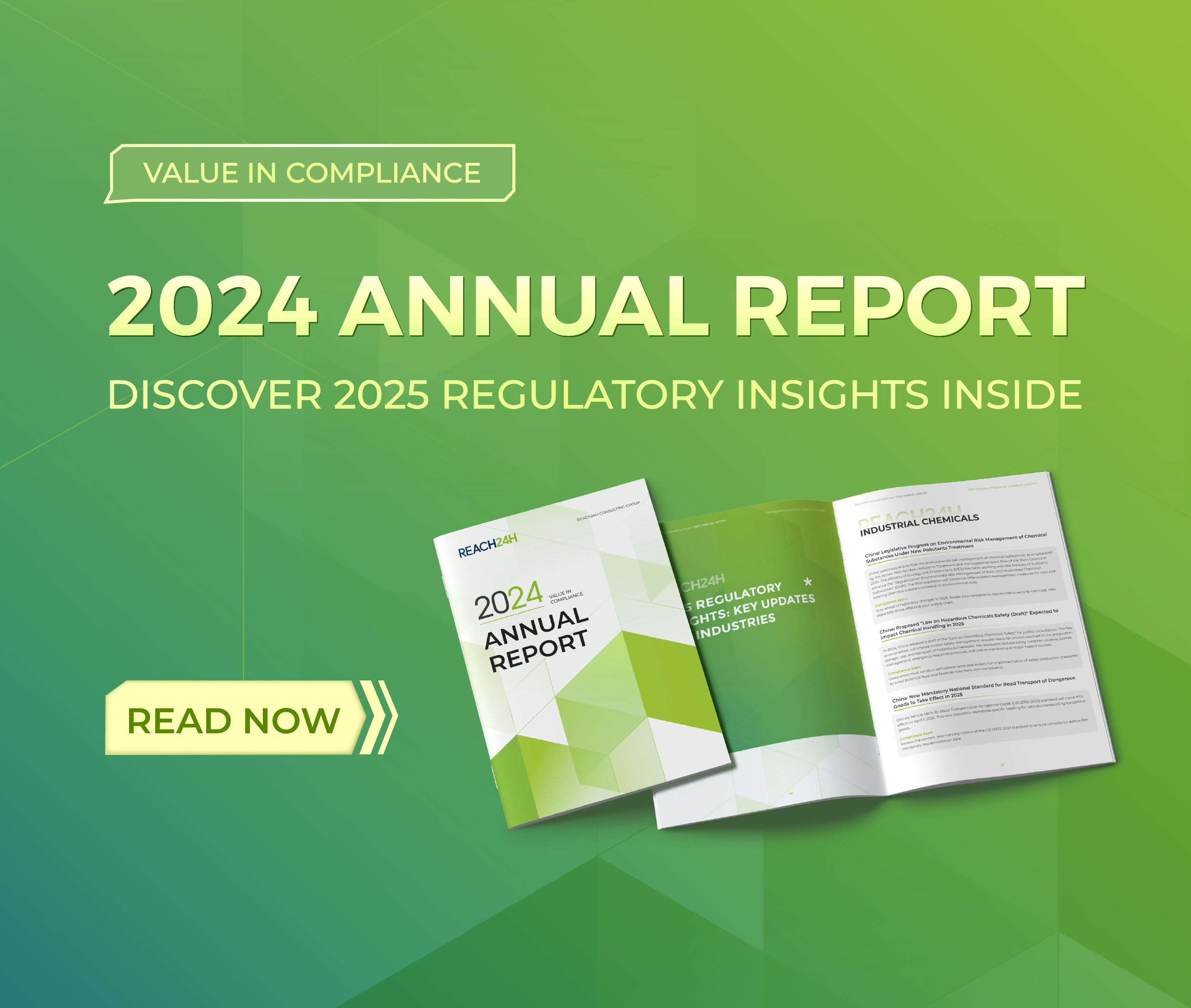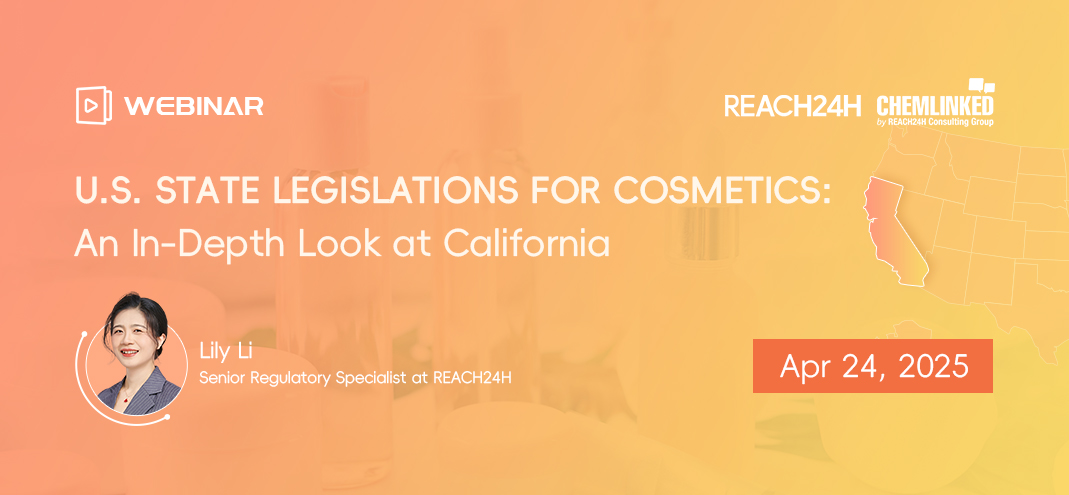Food Contact Notification(FCN) News in August
According to FDA official website, 7 food contact notifications (FCN) have been approved by FDA in August, and their information is shown in the table below:
|
Notifier |
Effective Date |
Name of The Substance |
Intended Use |
Limitations/Specifications |
| Selective Micro Technologies, LLC |
Aug 2,2017
|
Chlorine dioxide (CAS Reg. No. 10049-04-4). |
For use as an antimicrobial agent used to fumigate fruits and vegetables, including raw agricultural commodities (seeLimitations/Specifications).
|
The FCS will be applied only in unlit areas and shall not exceed 3 ppm residual in the air. The treatment of fruits and vegetables will be followed by air flush or by blanching, cooking, or canning. For fruits and vegetables that are raw agricultural commodities, the FCS will be applied in the preparing, packing, or holding of the food for commercial purposes, consistent with the FD&C Act section 201(q)(l)(B)(i) but not applied for use under 201(q)(l)(B)(i)(I), (q)(l)(B)(i)(II), or (q)(I)(B)(i)(III). The FCS is not for use in contact with infant formula and human milk. Such uses were not included as part of the intended use of the substance in the FCN. |
|
Chemische Fabrik Budenheim KG, Germany
|
Aug 3,2017
|
Phosphoric acid, iron (2+) salt, (2:3:x) (CAS Reg. No. 14940-41-1 (anhydrous); (CAS Reg. No. 10028-23-6) (octahydrate). |
As an IR absorber used for laser marking on the non-food contact surface of all food contact polymers, except for use in contact with infant formula and human milk (seeLimitations/Specifications). |
The FCS may be used at a level not to exceed 3 percent by weight of polymers intended to be used in single- or repeat-use food contact articles. The finished food contact articles will contact all food types under Conditions of Use E through G, as described in Tables 1 and 2. The finished food contact articles containing the FCS are not for use in contact with infant formula and human milk. Such uses were not included as part of the intended use of the substance in the FCN. |
|
TOYOBO Co., Ltd.
|
Aug 3,2017
|
The FCS is a reaction product of three polymers: 1. 2-propenoic acid, 2-methyl-, methyl ester, polymer with 4,5-dihydro-2-(1-methylethenyl)oxazole and ethyl 2-propenoate (CAS Reg. No. 57460-65-8); 2. methyl methacrylate, ethyl acrylate, methacrylic acid, butanoic acid 3-oxo- 2-[(2-methyl-1-oxo-2-propenyl)oxy]ethyl ester,3-(trimethoxysilyl)propyl methacrylate with poly(oxy-1,2-ethanediyl), alpha-sulfo-omega-[4-nonyl-2-(1-propen-1-yl)phenoxy]-, branched, ammonium salts copolymer; and 3.1,3-benzenedicarboxylic acid, polymer with 2-[(2-aminoethyl)amino]ethanol, 1,3-bis(isocyanatomethyl)cyclohexane, decanedioic acid, 1,3-diisocyanatomethylbenzene, 2,2-dimethyl-1,3-propanediol, 1,2-ethanediol and 3-hydroxy-2-(hydroxymethyl)-2-methylpropanoic acid, compd. with 1,1′,1”-nitrilotris[2-propanol] (CAS Reg. No. 1239020-50-8). |
As a coating on polyethylene terephthalate (PET) food packaging films that may contact food, except for use in contact with infant formula and human milk. |
The minimum thickness of the PET film is 0.5 mil, or 11.5 μm. The FCS coating on the PET film will not exceed 37 nm. The films may be used in contact with all types of food under Conditions of Use A through H as described in Tables 1 and 2. The FCS is not for use in contact with infant formula and human milk. Such uses were not included as part of the intended use of the substance in the FCN. |
|
Omya International AG and its Affiliates |
Aug 5,2017
|
Ethanol, 2-amino- (CAS Reg. No. 141-43-5).
|
As a component of fillers or coatings for paper and paperboard, except for use in contact with infant formula and human milk (see Limitations/Specifications). |
At a maximum rate in the finished paper of 0.041 weight-percent for filler applications and 0.01 weight-percent for coating applications. Finished materials and articles containing the FCS may be used in single use applications, for contact with all types of food, under the Conditions of Use E through G, as described in Tables 1 and 2. The FCS is not for use in contact with infant formula and human milk. Such uses were not included as part of the intended use of the substance in the FCN. |
|
Specialty Coating Systems |
Aug 17,2017
|
Poly[(chloro-1,4-phenylene)-1,2-ethanediyl] film (CAS Reg. No. 9052-19-1).
|
As a coating for coffee dispenser flowmeter magnets and seals; except for use in contact with infant formula and human milk (see Limitations/Specifications). |
The FCS will be used as a coating on magnets and on seals that surround those magnets that are used in flowmeters in commercial coffee dispensers and excluding coffee machines for home use. The maximum thickness of the coating will be 15 μm. Coffee dispensers containing the coating will have operating temperature up to 100°C. The FCS is not for use in contact with infant formula and human milk. Such uses were not included as part of the intended use of the substance in the FCN. |
|
The Dow Chemical Company
|
Aug 23, 2017 |
N,N,N’,N’-tetrakis(2-hydroxypropyl)adipamide (CAS Reg. No. 57843-53-5). REPLACES FCNs 1353 and 1502
|
As a crosslinking agent used in conjunction with the dispersions described in: FCNs 1087 and/or 1095, or FCNs 1315 and/or 1356 and/or 1357 to produce metal coatings or components of metal coatings, except for use in contact with infant formula and human milk (see Limitations/Specifications).
|
The FCS may be used at a maximum level of 0.57 mg/in2 of coating surface, not to exceed 6.2 percent by weight of the polyolefin dispersion coating. The finished coating on a given article will have a maximum average thickness of 35 microns or less in containers having volumes of two gallons and more and an average thickness of 15 microns or less in containers having volumes of less than two gallons. The finished coating may be used in contact with all food types, except infant formula or human milk, under Conditions of Use A through H, as described in Tables 1 and 2. The FCS is not for use in contact with infant formula and human milk. Such uses were not included as part of the intended use of the substance in the FCN. |
|
Harima Chemicals, Inc. Plasmine Technology, Inc. |
Aug 30, 2017 |
Copolymers of acrylamide, diallyldimethyl ammonium chloride, 2-methylenebutanedioic acid and propenoic acid. REPLACES FCN 1592 |
For use as a wet and dry strength agent, retention and/or drainage aid to be added prior to the sheet forming process, and as a pitch control agent added prior to the sheet forming process/or to pulp in the pulping process immediately prior to sheet forming in the manufacture of paper and paperboard, except for use in contact with infant formula and human milk (see Limitations and Specifications).
|
The FCS should not exceed 30 pounds per ton by dry weight of the finished paper and paperboard. The FCS may be used in contact with all types of food under Conditions of Use A through H, as described in Tables 1 and 2, respectively. The FCS is not for use in contact with infant formula and human milk. Such use was not included as part of the intended use of the substance in the FCN. |
REACH24H has rich experience in dealing with United States food contact materials (FDA /FCN / 21 CFR) and EU food contact materials (EU 10/2011/BfR) and can make custom-made compliance service for enterprises. If you have further questions, please consult +86 571-8196 9942 or send e-mail to wangfang@reach24h.cn.


